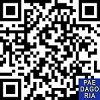STRATEGI MENTAL CALCULATION SISWA DENGAN STRUKTUR RESPON TAKSONOMI SOLO DALAM MENYELESAIKAN SOAL CERITA
Abstract
Abstrak: Setiap siswa tentunya mempunyai perbedaan kemampuan ketika menerima penjelasan atau memberi tanggapan tentang sebuah permasalahan khususnya untuk menyelesaikan soal cerita penjumlahan dan pengurangan bilangan bulat. Tujuan penelitian ini adalah untuk mengetahui Strategi Mental Calculation Siswa dengan Struktur Respon Taksonomi SOLO dalam Menyelesaikan Soal Cerita Operasi Hitung Bilangan Bulat”. Penelitian ini menggunakan penelitian deskriptif kualitatif. Partisipan pada penelitian ini terdiri dari 87 siswa akan tetapi diambil menjadi 10 siswa. Instrumen yang digunakan pada penelitian ini adalah tes kamampuan matematika siswa, tes mental calculation, dan instrumen wawancara. Teknik analisis data dalam penelitian ini menggunakan model analisis data interaktif dari Miles dan Huberman. Hasil penelitian menunjukkan bahwa pada saat menyelesaikan soal cerita bilangan bulat siswa dengan kemampuan matematika yang berbeda-beda digolongkan berdasarkan taksonomi SOLO menggunakan strategi mental calculation yang berbeda-beda sesuai dengan kemampuan matematikanya dalam memenuhi kuantitas pembelajaran.
Abstract: Each student certainly has different abilities when receiving an explanation or responding to a problem, especially to solve the story problems of addition and subtraction of whole numbers. The purpose of this study was to determine the Mental Calculation Strategy of Students with SOLO Taxonomy Response Structure in Solving Integer Calculation Story Problems". This research used descriptive qualitative research. The participants in this study consisted of 87 students but were taken to be 10 students. The instruments used in this study were student math ability tests, mental calculation tests, and interview instruments. The data analysis technique in this study used an interactive data analysis model from Miles and Huberman. The results showed that when solving integer story problems, students with different mathematical abilities classified based on SOLO taxonomy used different mental calculation strategies according to their mathematical abilities in meeting the learning quantity.Keywords
Full Text:
PDFReferences
Biggs, J. B., & Collis, K. F. (1982). The Psychological Structure of Creative Writing. Australian Journal of Education, 26(1), 59–70. https://doi.org/10.1177/000494418202600104
Biggs, J., & Tang, C. (2011). Train-the-trainers: Implementing outcomes-based teaching and learning in Malaysian higher education. Malaysian Journal of Learning and Instruction, 8, 1–19.
Gonsalves, N., & Krawec, J. (2014). Using Number Lines to Solve Math Word Problems: A Strategy for Students with Learning Disabilities. Learning Disabilities Research & Practice, 29(4), 160–170. https://doi.org/10.1111/ldrp.12042
Gruessing, M., Schwabe, J., Heinze, A., & Lipowsky, F. (2013). The Effects of Two Instructional Approaches on 3rd-Graders’ Adaptive Strategy Use for Multi-Digit Addition and Subtraction. Proceedings of the 37th Conference of the International Group for the Psychology of Mathematics Education, 393–400.
Hadi, S., & Radiyatul, R. (2014). Metode Pemecahan Masalah Menurut Polya untuk Mengembangkan Kemampuan Siswa dalam Pemecahan Masalah Matematis di Sekolah Menengah Pertama. EDU-MAT: Jurnal Pendidikan Matematika, 2(1). https://doi.org/10.20527/edumat.v2i1.603
Hasan, B. (2017). Karakteristik respon siswa dalam menyelesaikan soal geometri berdasarkan taksonomi solo. JINoP (Jurnal Inovasi Pembelajaran), 3(1), 449–458.
Jupri, A., Drijvers, P., & Heuvel-Panhuizen, M. van den. (2014). Student Difficulties in Solving Equations from an Operational and a Structural Perspective. International Electronic Journal of Mathematics Education, 9(1), 39–55. https://doi.org/10.29333/iejme/280
Kamilia, I. D., Sugiarti, T., Trapsilasiwi, D., Susanto, & Hobri. (2018). Analisis Level Berpikir Siswa Berdasarkan Taksonomi Solo dalam Menyelesaikan Soal Cerita SPLDV Ditinjau Dari Tipe Kepribadian Florence Littauer. KADIKMA, 9(2), 165–174.
Lemoni, I., Lemonidis, C., & Christou, K. P. (2014). Mental Calculation Strategies For Addition And Subtraction With Integers. 4 Th International Conference Education Across Borders Education in the 21st Century: Challenges and Perspectives, 409–422.
Lidinillah, D. A. M., Mulyana, E. H., Karlimah, K., & Hamdu, G. (2019). Integration of STEM learning into the elementary curriculum in Indonesia: An analysis and exploration. Journal of Physics: Conference Series, 1318(1), 012053. https://doi.org/10.1088/1742-6596/1318/1/012053
Mahmudah, S. (2015). Peningkatan Ketrampilan Menyelesaikan Soal Cerita Matematika Menggunakan Media Kartu Kerja Pada Siswa Kelas II SDN Purworejo Kecamatan Kandat Kabupaten Kediri. PINUS: Pijar Nusantara, 1, 165–173. https://doi.org/10.29407/pn.v1i2.163
Miles, M. B., Huberman, A. M., & Saldana, J. (2014a). Qualitative data analysis: A methods sourcebook (3rd Editio). Sage Publications.
Miles, M. B., Huberman, A. M., & Saldana, J. (2014b). Qualitative Data Analysis: A Methods Sourcebook (Third Edit). SAGE Publications, Inc.
Rathgeb-Schnierer, E., & Green, M. G. (2019). Developing Flexibility in Mental Calculation. Educação & Realidade, 44(2). https://doi.org/10.1590/2175-623687078
Selter, C. (2009). Creativity, flexibility, adaptivity, and strategy use in mathematics. ZDM, 41(5), 619–625. https://doi.org/10.1007/s11858-009-0203-7
Singh, P., Hoon, T. S., Nasir, N. A. M., Han, C. T., Rasid, N. S. M., & BZH, J. (2020). An Analysis of Students’ Mathematical Reasoning and Mental Computation Proficiencies. Universal Journal of Educational Research, 8(11), 5628–5636. https://doi.org/10.13189/ujer.2020.081167
Tanjung, D. F., Syahputra, E., & Irvan, I. (2020). Problem Based Learning, Discovery Learning, and Open Ended Models: An experiment On Mathematical Problem Solving Ability. JTAM | Jurnal Teori Dan Aplikasi Matematika, 4(1), 9. https://doi.org/10.31764/jtam.v4i1.1736
Thompson, I. (1999). Mental Calculation Strategies for Addition and Subtraction. Mathematics in School, 28(5), 2–4.
Varol, F., & Farran, D. (2007). Elementary school students’ mental computation proficiencies. Early Childhood Education Journal, 35(1), 89–94. https://doi.org/10.1007/s10643-007-0173-8
Vula, E., & Kurshumlia, R. (2015). Mathematics word problem solving through collaborative action research. Journal of Teacher Action Research, 1(2), 34–46.
DOI: https://doi.org/10.31764/paedagoria.v14i3.16037
Refbacks
- There are currently no refbacks.
Copyright (c) 2023 Ni'matur Rochmah, Rooselyna Ekawati, Neni Mariana

This work is licensed under a Creative Commons Attribution-ShareAlike 4.0 International License.
Paedagoria : Jurnal Kajian, Penelitian dan Pengembangan Kependidikan
Fakultas Keguruan & Ilmu Pendidikan | Universitas Muhammadiyah Mataram.
_______________________________________________
 | Paedagoria : Jurnal Kajian, Penelitian dan Pengembangan Kependidikan |
______________________________________________
CURRENT INDEXING:
EDITORIAL OFFICE:


















